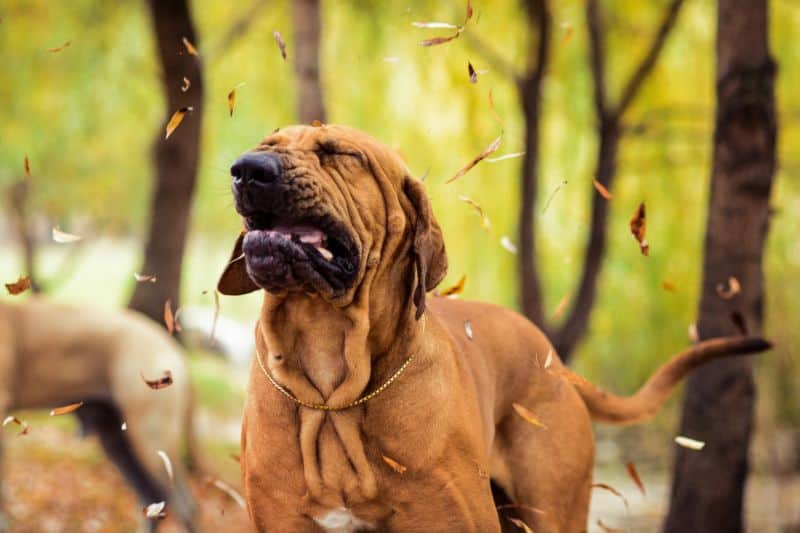Reverse Sneezing and Other Things That Go Honk in the Night

Dogs can make some pretty crazy noises. While you may be used to your Bulldog’s snorts or your lazy Labrador’s sleepy snores, some doggy noises happen when something is amiss. It can be hard to know when to worry, but that’s where your professionals at Mobile Vet M.D. come in.
Be it reverse sneezing, goose honking, or a myriad of other strange snorts, we are here to help.
Reverse Sneezing and Other Questionable Sounds
Some respiratory sounds in pets are more worrisome than others.
A common noise we hear about is the reverse sneeze. Reverse sneezing can look pretty scary. The pet usually extends their neck and pulls it back to inhale, repeatedly making a gagging noise. It can be quite dramatic and last several seconds.
A reverse sneeze, though, is usually nothing scary. It is simply a reflex like a regular sneeze in which the back of the throat is irritated, often by an allergen or mucous.
Other common respiratory sounds in pets might include:
Cough – A pet cough, similar to a human cough, involves abdominal effort and may be productive, bringing up some type of material. Pets can develop a cough due to things like respiratory infections, irritation, collapsing trachea, asthma, heart disease, or even parasites.
Goose honking – A characteristic loud goose-honking cough often occurs with infectious tracheobronchitis, also known as kennel cough.
Sneezes – Irritation of the nasal passages causes sneezing, just like in people. Frequent sneezing, especially when accompanied by drainage, can indicate a problem.
Stridor and stertor – Stridor, a high-pitched wheeze, and stertor, a snoring sound, happen when normal breathing is obstructed. Smushy-faced brachycephalic breeds may experience this normally, but it should be checked out when it’s a new or worsening problem.
Wheezes – Wheezing while breathing is not normal and may be indicative of serious conditions such as asthma.
When To Worry
Pets make sounds, and you obviously can’t make an appointment anytime someone sniffles or snorts. However, some sounds can be a sign of serious respiratory issues. So what is a pet owner to do?
Give us a call. We are happy to help decide if it sounds like an examination is warranted. If you are concerned, it is never wrong to have your pet looked at.
Some things, though, are an automatic for needing to be examined. These include:
- Increased respiratory speed or effort at rest
- Blue or gray mucous membranes
- Decreased activity level
- Discharge from the eyes or nose
- Lethargy or weakness
- Increased intensity or frequency of the respiratory noise
- A pet that is acting abnormally.
Many times diagnostic testing such as radiographs, blood work and chest auscultation are warranted. We want to identify the problem as quickly as possible so that we can treat it appropriately and in a timely fashion. We don’t mess around when it comes to your pet’s health.
